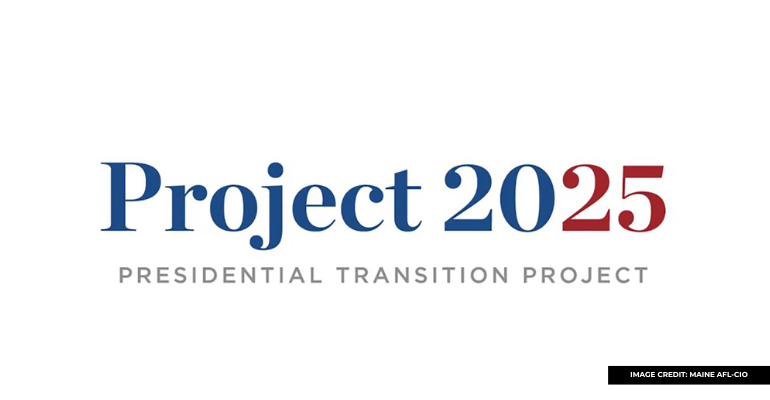As global attention turned to the U.S. election results 2024, one term making waves is the Project 2025 list. But what exactly is it, and why does it matter to the Philippines and other nations?
What is Project 2025 About?
Project 2025 is a strategic blueprint aimed at reshaping U.S. federal governance in anticipation of a potential conservative victory in 2024. Backed by key think tanks and policy groups, the Project 2025 document outlines plans to streamline government operations, restructure agencies, and prioritize conservative policy initiatives. This includes areas like trade, defense, and foreign policy—sectors that could directly influence the Philippines.
Impact of the Project 2025 Plans on the Philippines
The Philippines, a key U.S. ally in Southeast Asia, could see shifts in bilateral relations under Project 2025’s framework. The focus on trade reforms and military realignments could affect joint defense initiatives like the Enhanced Defense Cooperation Agreement (EDCA) and economic policies influencing exports. As Project 2025 emphasizes strengthening U.S. interests, Filipino industries relying on trade agreements with the U.S. may need to adapt quickly.
Also Read: Duterte Admits He Had a Death Squad as Mayor of Davao City
Additionally, Project 2025’s stance on global alliances could impact the Philippines’ role in the Indo-Pacific strategy. A shift toward more aggressive geopolitical posturing might increase tensions in the South China Sea, where the Philippines maintains a critical stake.
Why the World Is Watching
The Project 2025 list of proposed reforms serves as a policy barometer for the next U.S. administration. With global markets, foreign aid, and defense strategies at stake, nations like the Philippines must remain vigilant. As the U.S. shapes its future direction, the ripple effects could redefine international dynamics for years to come.
With the election results 2024 looming, Project 2025 provides a glimpse into the policies that may shape not only U.S. governance but also its global partnerships.
Here are a few questions you might have about Project 2025’s impact.
Also Read: Luigi Villafuerte in Siargao Faces Criticism from Netizens
Does Trump support Project 2025, and how could his support influence U.S.-Philippines relations?
Yes, Donald Trump and his allies have expressed strong support for Project 2025. This initiative aligns with Trump’s “America First” policy, emphasizing national security, trade protectionism, and reducing U.S. involvement in international agreements. If Trump secures a victory in the election results 2024, his endorsement of Project 2025 could lead to shifts in U.S. foreign policy, potentially affecting U.S.-Philippines relations. For instance, military cooperation under agreements like EDCA and the Mutual Defense Treaty might see more robust enforcement, or conversely, face tighter U.S. oversight. Economic policies may also shift, affecting Filipino exports to the U.S.
Is Project 2025 real, and why should Filipinos care about it?
Yes, Project 2025 is very real. It’s a comprehensive policy agenda developed by U.S. conservative think tanks to guide the next potential Republican administration. Its detailed plans are outlined in the publicly available Project 2025 document. Filipinos should care because the U.S. remains one of the Philippines’ closest allies. Changes in U.S. governance and policies under Project 2025 could significantly impact areas such as military cooperation, trade, and geopolitical strategy in the Indo-Pacific. For instance, a more assertive U.S. stance in the region could affect the South China Sea dispute, while shifts in trade policy might influence Filipino exports. Staying informed about such initiatives helps Filipinos anticipate and prepare for potential changes in bilateral relations.
How could Project 2025 impact the South China Sea dispute and the Philippines’ position?
Project 2025 advocates for a more assertive U.S. stance on geopolitical challenges, including in the Indo-Pacific region. This could mean heightened U.S. military presence and support for allies like the Philippines in the South China Sea, where territorial disputes with China are ongoing. For the Philippines, this could bolster its defense capabilities and diplomatic leverage. However, it may also escalate tensions in the region, requiring careful navigation to maintain peace while asserting sovereignty.
What does Project 2025 mean for the Philippine economy, especially industries reliant on U.S. trade?
If Project 2025 leads to stricter U.S. trade policies, Philippine industries that rely heavily on exports to the U.S.—such as electronics, textiles, and agricultural products—might face challenges. The Project 2025 document highlights prioritizing American industries, which could result in changes to trade agreements. Filipino exporters may need to diversify their markets or adapt to new regulations. However, this also presents opportunities for sectors that align with U.S. priorities, such as green energy or defense manufacturing, to strengthen economic ties under the new framework.
Source: (1)
Keep Reading: US Presidential Election 2024 Results: How Will the Winning Candidate Affect Filipino-Americans?

Leave a Reply